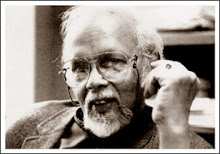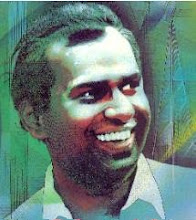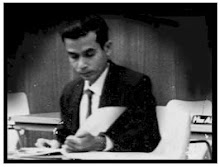Date: 25/01/2009
Source: Sunday Observer
Colossus in the field of dancing and theatre Chithrasena re-defined dying traditions of indigenous dancing which were confined to rituals and adapted them to modern theatre with their multitude of embellishments. More than anything else, it was his life-long commitment to the craft and the monumental works resulted from sheer dedication and hard work that remain as a rich repertoire. It is this tradition that `Chithrasena Kalayathanaya' continues to nurture with research and innovation being added to its creations.
As the nation commemorates the 88th birth anniversary of Chithrasena, the legendary dancer and theatre personality, it is pertinent to look back on the thorny track the legendary dancer trod on and the path he paved for posterity to walk along in search of excellence and innovation in the craft.
January 26, the day Chithrasena was born has been declared the National Ballet Day as a mark of respect to the legend.
Adornment
Chitrasena laid the firm foundation for dancing admixing new features with embellishment appropriate to it, making it suitable even for an international audience. His stage personality became a role model for aspiring dancers. He created theatrical marvels in his monumental work, ballet Karadiya. For instance, the dream scene in Karadiya is a fine example of creating theatrical marvels which are inherently linked to the work. Most of the scenes in ballets Nala Damayanthi and Shivaranga remind of mystic quality in Asian myths. On the other hand, Kinkini Kolama manifests visual features of old Sri Lankan folk theatre.It should be mentioned here that `Kinkini Kolama' which was especially choreographed for Upeka, Chithrasena.
The essence of dancing, irrespective of diverse traditions, lies in its ability to entertain the dancer through rhythmic movements of the body and to convey it to the audience as an expression of emotions. It is in this light that we should appreciate Chithrasena and his trailblazing career in dancing.
Chithrasena's practice would strike a delicate balance between two extremes of totally being materialistic and being spiritual, completely forgetting the existence of the body. His repertoire of works will remain as masterpieces of lasting value which will inspire generations to come.
One of the significant features of Chithrasena's practices was that his consideration of dancing not as a mere form of art which manifests `Sri Lankan culture' but an art capable of expressing one's inner-most soul. He emphasised this fact in performances such as Nurthanjali and Navanjali which were adapted to traditional theatre.Through his larger-than-life personality, Chithrasena has left indelible footprints on the arena of Sri Lankan dancing. Perhaps, he will be remembered by the posterity as a peerless pioneer who uplifted Sri Lankan tradition of dancing from its status of being a ritual to a fully-fledged art form suitable for proscenium stage. He not only introduced ballet to Sri Lankan theatre but also the pioneering choreographer in Sri Lankan dancing.
Golden era
With his death a golden era in Sri Lankan dance in which the first ever Sri Lankan ballets such as Karadiya and Nala Damayanthi were made, came to an end against the back drop of deteriorating standards in almost all forms of arts and even in Sinhalese literature.
One of the predominant characteristics of the post-Chithrasena era was drastic cultural alienation and all-encompassing commercialism with popular culture centred on cheap movies from Hollywood and Bollywood.
The degeneration which commenced in the system of education soon, extended into other spheres such as arts, culture, language and literature and social values that had been held sacred once, gave way for borrowed values based on ideologies like post-modernism.
Traditional dance has been so commercialised that it reduced to ornamental arts and became part and parcel of local weddings or opening ceremonies . Although commercialism is to be blamed for the situation, other factors such as decreasing audience for serious arts and absence of appreciation of classical works of art have also been adversely contributed to the present crisis in dancing.



































No comments:
Post a Comment